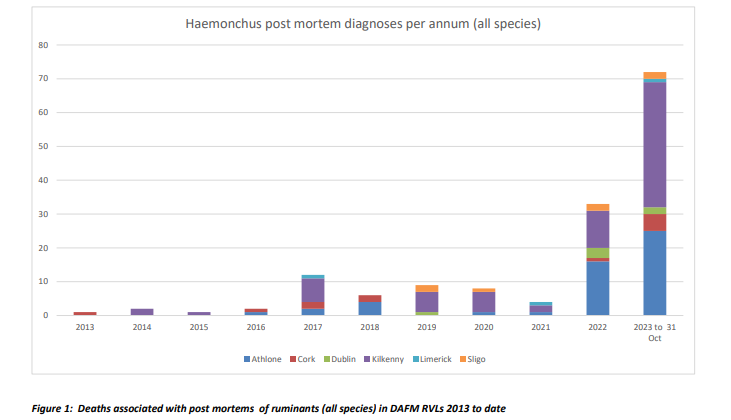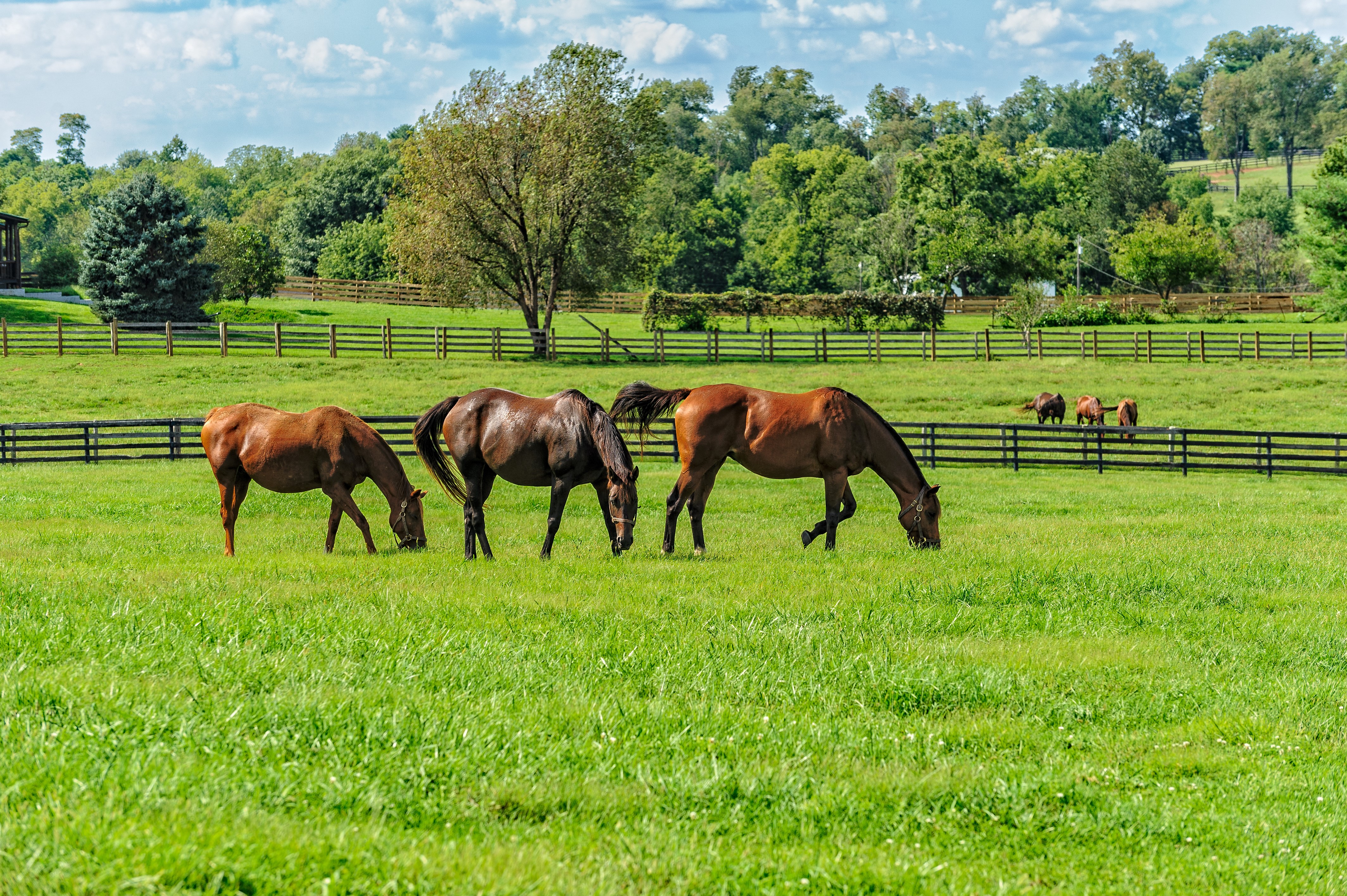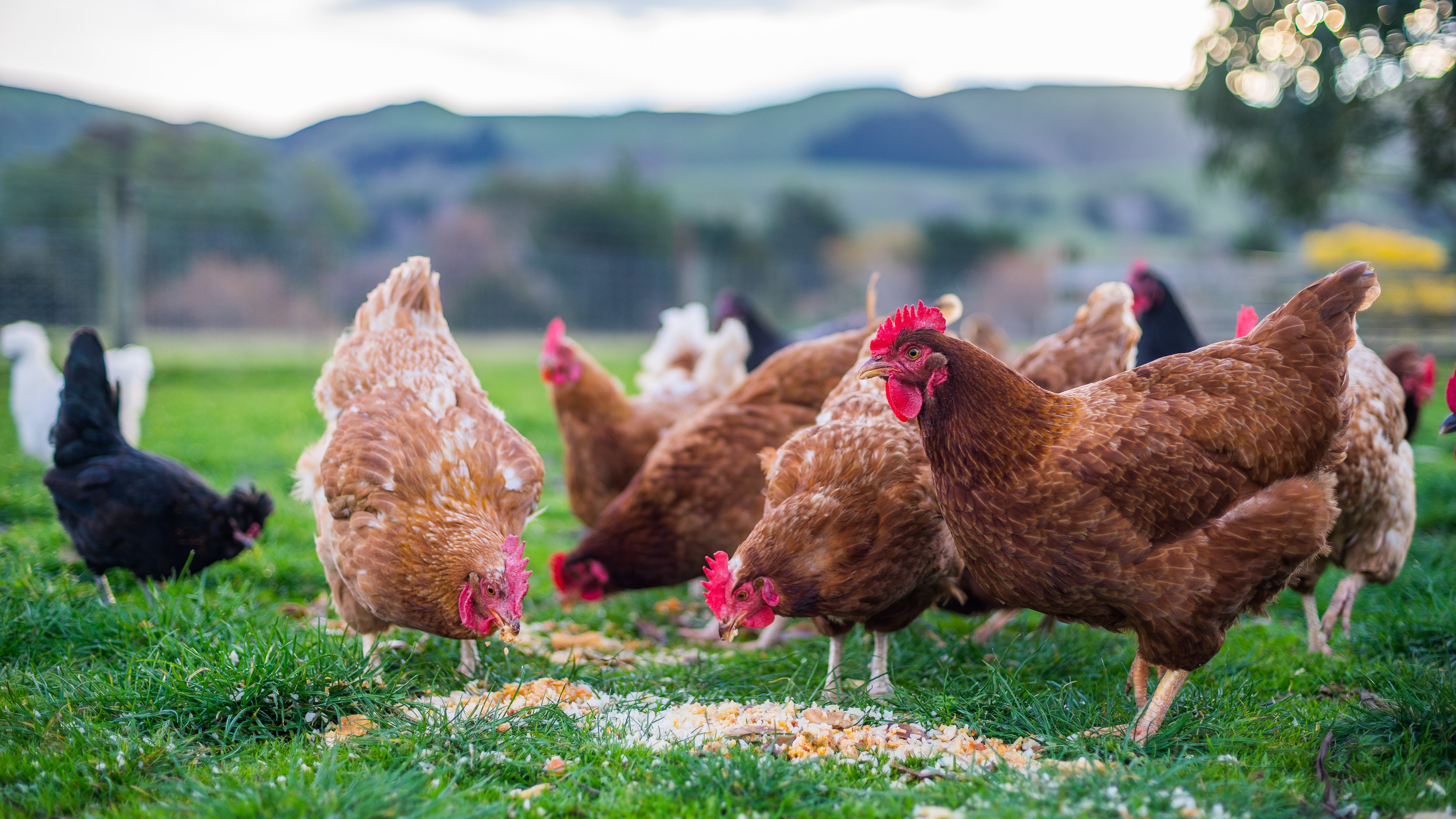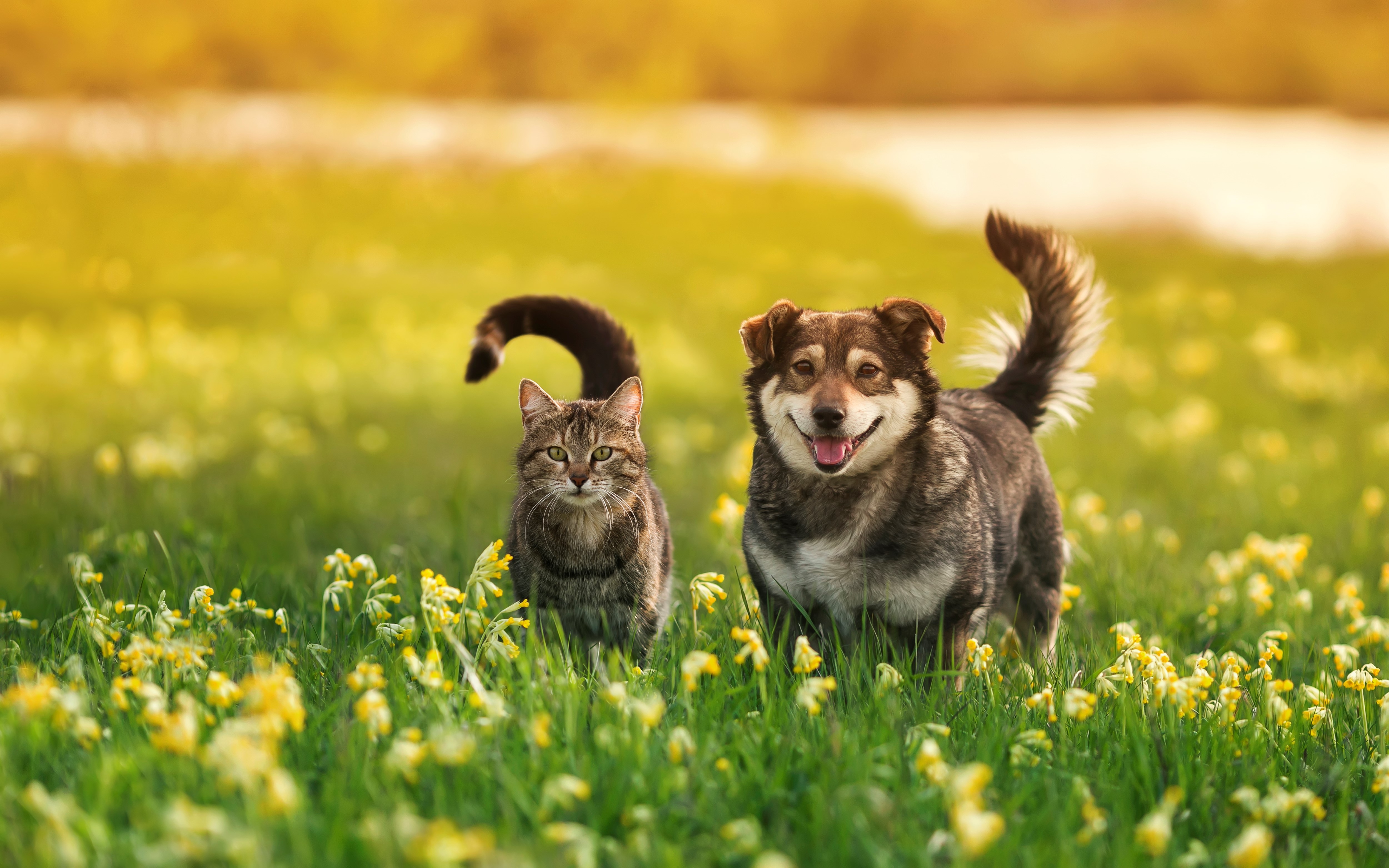Haemonchus contortus
Haemonchus contortus produces eggs that are very similar in size and shape to those produced by other roundworms such as Ostertagia and Cooperia.
Indicators of Haemonchus contortus in a sheep include the presence of elevated faecal egg counts (e.g., > 1000 eggs per gram) and clinical signs including poor thrive, anaemia, general weakness, bottle jaw, with little or no diarrhoea.
However, a definitive diagnosis of Haemonchus contortus can only be reached currently via postmortem examination when these roundworms, measuring up to 30mm, are observed in the abomasum (fourth stomach). In contrast to Haemonchus contortus, the maximum size of Ostertagia ostertagi roundworms, which are also located in the abomasum, is 10mm.
The perception from the Department labs is that Haemonchus contorus is increasing in Ireland and the geographic area it has been diagnosed in is expanding. The Department is currently working on a test to differentiate Haemonchus contortus eggs from those of other common roundworm eggs.
This table shows the number of post mortems across all ruminant species where Haemonchus contortus was identified as the cause of death. While these data show an uptick in the diagnoses of death due to Haemonchus, this is a simple count of post mortems – some of these may represent multiple submissions from a single farm/incident. Having said that, our experience is largely in accordance with the industry perception that this parasite is becoming more widespread and impactful in Ireland. Nonetheless, the figures should be interpreted with some caution: All RVL post mortems are carried out voluntarily, and the caseload is largely selected by the referring veterinary practitioners. While the observed increase in the involvement of Haemonchus in mortalities investigated by RVL post mortems may indeed reflect an increased prevalence, some part of the increased numbers may be a result of heightened awareness of the disease as a cause of illness especially weight loss and anaemia in sheep (in particular), especially through the monthly reports of RVL findings in the Irish Veterinary Journal.








